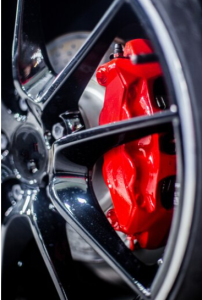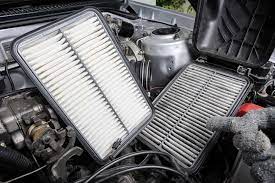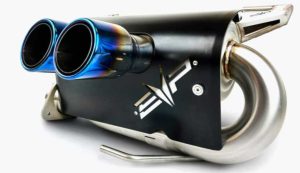 Setting up a competitive drag car is a unique experience because it requires rethinking how you optimize performance to maximize off-the-line acceleration over everything else. If you have been optimizing for street or track performance, the strip requires you to change everything from the way your vehicle puts engine power to use to the shape of your tire and its composition. It’s easy to overlook how important drag tires can be until you understand them.
Setting up a competitive drag car is a unique experience because it requires rethinking how you optimize performance to maximize off-the-line acceleration over everything else. If you have been optimizing for street or track performance, the strip requires you to change everything from the way your vehicle puts engine power to use to the shape of your tire and its composition. It’s easy to overlook how important drag tires can be until you understand them.
Drag Slick Materials and Construction Goals
If you know anything about racing generally, then you probably already understand what slicks are. Unlike off-road and street tires, they have no tread and instead rely on total contact with the road’s surface. It’s not as simple as just making a tire without a tread, though. They also have to be made from a sticky compound that helps maintain the friction needed for control at high speeds. Unlike radials, slicks have a two-ply sidewall that is designed to wrinkle at launch.
Slicks also have a flat shape that maximizes contact with the ground across its entire width. It is the combination of these features that makes them uniquely capable of the traction needed for fast acceleration and high-speed control. Drag slicks are a little different from racing slicks because they are optimized for that initial burst of energy, not for a sustained performance over a series of laps.
Friction, Traction, and Acceleration
The increased friction against road and track surfaces translates to traction, which is important because you can make more power than any other car in the competition and still lose if that power does not translate to actual work done. That means you need to be able to channel your engine’s output, which is done mechanically through the transmission and drivetrain. Without tires that can maintain traction at high RPMs, you’re just spinning your wheels.
There is some debate within the community over whether drag radials or true drag slicks are the better option. Both are designed to work better than street or track tires, but which one is right for your vehicle?
If you go strictly by the physics of the situation, true drag slicks have a slight advantage. They do wear out a little faster, though, and it is difficult to find DOT-approved drag slicks if you drive your vehicle to competitions. It’s a little easier to find radials that have just enough tread to get approved, and that is worth keeping in mind as you assess your goals and choices. It’s also worth noting that the right automotive tools can make swapping rims and tires at the track a feasible option, too.
Find More Parts for Your Drag Car
Putting together a complete drag build that can win involves more than just improved mechanics. It also means investing in the safety features that help you succeed. Improved brakes and racing seats with full safety harnesses are both examples of investments that help you win and keep you safe. Start looking for the rest of the parts you need to compete today.





